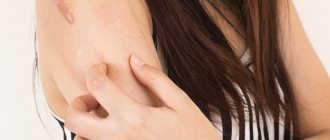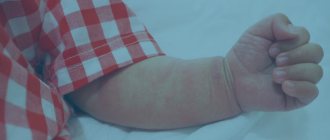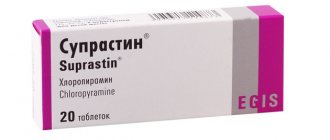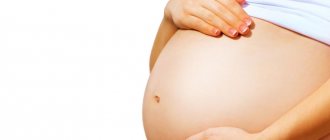Psoriasis can impair a person's quality of life to the same extent as depression. Depending on how severe the disease is and how affected the skin areas are, patients experience physical or psychological pain , and it is difficult for them to adapt to work. Sometimes the question of disability even arises. The disease is accompanied by severe skin itching, which interferes with sleep, caring for the body and performing other vital functions.
To eliminate symptoms, special drugs that can alleviate the condition. Skin cap, available in the form of cream and aerosol, copes well with this task. All that remains is to figure out which form is more effective.
Compound
| Aerosol for external use | 100 g |
| active substance: | |
| zinc pyrithione activated | 0.2 g |
| excipients: isopropyl myristate - 48.37 g; polysorbate 80 - 0.32 g; trolamine - 0.04 g; ethanol - 34 g; water - 0.5 g; propellants (isobutane - 76.2%, propane - 23.29%; butane - 0.51%) - up to 100 g |
| Cream for external use | 100 g |
| active substance: | |
| zinc pyrithione activated | 0.2 g |
| excipients: glyceryl mono- and distearate (Tegin M); capryl caprylate (Tegosoft EE); methyldextrose and macrogol 20 ether (Tegosoft E20); isopropyl palmitate (Tegosoft R); methyldextrose polyglyceryl distearate (Tego Care 450); butylated hydroxytoluene; glycerol; propyl parahydroxybenzoate (Nipagin); sucrose and coconut oil fatty acid ester (Tegosoft LSE 65K); stearyl alcohol (Tego Alkanol 18); ethanol; flavoring (citronellol, phenylethanol, geraniol, terpineol, cinnamyl alcohol); cyclomethicone (Abil K4); water |
| Shampoo | 100 ml |
| active substance: | |
| zinc pyrithione activated | 1 g |
| excipients: Tego Perli C-96 (sodium lauryl sulfate + coconut oil fatty acid monoethanolamide + ethylene glycol monostearate); Tego Betaine L-7 (propyl betainamide fatty acids of coconut oil); Tego sulfonate 2427 Bondesurf NL 228E (sodium lauryl sulfate); Abil B 88183 (dimethicone, macrogol and polypropylene glycol copolymer); disodium edetate, sodium chloride, levomenthol, ethanol, Antil 141-Liquid (propylene glycol + macrogol-55-propylene glycol oleate); flavor (Binea 10680) (citronellol + phenylethanol + geraniol + terpineol + cinnamyl alcohol); water - up to 100 ml |
Distinctive characteristics
They mainly consist in the form of release, which affects:
- Additional composition.
- Consistency of the substance.
- Some indications, for example: ointment is used for increased dryness of the skin, but aerosol is not.
- An aerosol may be prescribed during pregnancy and breastfeeding if the expected benefit of therapy is higher than the potential harm to the fetus or infant.
- Special instructions for using the aerosol: before starting treatment, the bottle must be shaken several times; When spraying, keep it vertical; When treating hair areas of the head, use a special attachment.
- The cream is stored for 3 years , and the aerosol - 5 years .
- The cost of cream is from 896 rubles , aerosol - from 1717 rubles .
Pharmacodynamics
Activated zinc pyrithione has anti-inflammatory, antibacterial and antifungal activity. Antifungal activity is especially pronounced against Pityrosporum ovale and Pityrosporum orbiculare, which support inflammation and excessive flaking in dandruff, seborrhea, psoriasis and other skin diseases.
The antibacterial activity of zinc pyrithione is manifested against a number of pathogenic microorganisms (including streptococcus, staphylococcus, Pseudomonas aeruginosa and Escherichia coli, Proteus).
Zinc pyrithione reduces the intracellular level of ATP, promotes depolarization of cell membranes and the death of fungi and bacteria.
The mechanism of anti-inflammatory action has not been studied.
What to give preference to?
Before treatment, consultation with a dermatologist . It will help you decide on the release form. It is very important to take into account the form of the disease, the size of the affected areas, location, condition of the rashes, plaques.
For example, the cream contains an emulsion that includes coconut oil and water, which gives the cream a light and soft consistency. Thanks to this, it quickly penetrates the surface layers of the skin and does not leave any unwanted shine. Therefore, if you look at the speed of action on affected areas without hair, the cream is more effective. It does not require the use of bandages. It is easy to apply. The only negative is the rapid consumption when squeezing out of the tube. This form of Skin-cap is successfully used for psoriasis with weeping and dry plaques.
The aerosol is better suited for psoriasis of the scalp, as it has a special nozzle. The aerosol does not leave greasy marks and does not create the effect of hair sticking. The positive side of this form of release is the ability to penetrate hard-to-reach affected areas.
We can conclude: both forms of release are effective means for combating dermatological diseases. A dermatologist will help you determine what to treat. When using the drug, you must follow the manufacturer's recommendations.
Medicine and healthComment
Directions for use and doses
Externally.
Aerosol: spray onto the affected areas of the skin from a distance of 15 cm 2-3 times a day until a clinical effect is achieved. To achieve a lasting effect, it is recommended to continue using the drug for 1 week after the symptoms disappear. To treat the scalp with the drug, a special nozzle is included. The course of treatment for psoriasis is 1-1.5 months, for atopic dermatitis - 3-4 weeks.
The method of administration and dosage for children do not differ from those for adults.
If necessary, you can repeat the course of treatment after 1–1.5 months, after consultation with your doctor.
Cream: after vigorous shaking, apply a thin layer to the affected areas of the skin 2 times a day. The course of treatment for psoriasis is 1-1.5 months, for atopic dermatitis - 3-4 weeks.
The method of administration and dosage for children do not differ from those for adults.
If necessary, you can repeat the course of treatment after 1–1.5 months, after consultation with your doctor.
Shampoo: before use, shake the bottle vigorously, apply a small amount of shampoo to damp hair and massage the scalp, then rinse your hair and reapply shampoo. Leave the shampoo on your hair for 5 minutes and rinse thoroughly with plenty of water. Use 2-3 times a week for the first 2 weeks. The course of treatment for psoriasis is 5 weeks, for seborrhea - 2 weeks.
During the period of remission, shampoo can be used 1-2 times a week as a means of preventing relapses.
General characteristics
Both forms are analogues of each other, therefore they have many similar indicators:
- One country of origin is Spain .
- General pharmacological group - dermatoprotective agent .
- Both forms carry out the same pharmacological effects on the human body, through a common main substance - activated zinc parithion .
- They have similar pharmacokinetics - they are distributed in the epidermis and superficial layers of the skin.
- Used for: psoriasis, atopic dermatitis, neurodermatitis, eczema, seborrheic dermatitis.
- They are used to treat seborrheic dermatitis in children starting from one year of age.
- Both forms have minor contraindications : individual intolerance to the components of the composition.
- Side effects from use: at the beginning of treatment, a burning sensation may occur at the sites of exposure to the drug, which quickly passes. Allergic reactions are possible.
- The cream and aerosol are used 2-3 times throughout the day . The duration of treatment is 3-4 weeks for atopic dermatitis and 1.5 months for psoriasis.
Each form can be purchased without a prescription.
Release form
Aerosol for external use, 0.2%. 35, 70, 140 g of the drug in an aluminum aerosol can, which consists of a valve and a cap. The cylinder along with an additional nozzle is placed in a cardboard box.
35 g of the drug in an aluminum aerosol can, which consists of a valve and a cap (free sample).
Cream for external use, 0.2%. 5 g in a sachet made of laminated foil. 15 and 50 g in a plastic tube. Each tube is placed in a cardboard box
Shampoo, 1%. 50 ml, 150 ml, 400 ml in a plastic bottle. Each bottle is placed in a cardboard pack. 5 g in a sachet made of laminated foil. 5 sachets are placed together in a cardboard pack. 5 g in laminated foil sachets (free sample).
Skin cap cream
By order of Hemigroup France S.A., France for Invar LLC, Russia, the cream is produced in Spain. Refers to drugs that have a dermatoprotective effect .
Skin-cap cream is applied externally. The therapeutic effect is carried out due to the main substance - activated zinc pyrithione . It is combined with additional components that create a cream consistency, a soft effect on the affected areas, color (white), and smell (coconut essential oil).
The cream (0.2%) is placed in plastic tubes of 15 or 50 g each. In addition, the cream can be purchased in laminated foil sachets of 5 g.
The cream copes with:
- Bacteria: streptococci, Proteus, Pseudomonas aeruginosa, Escherichia coli, staphylococci.
- Fungi Pityrosporym ovale and Pityrosporym orbiculare , causing inflammation, excessive flaking (dandruff), seborrhea, psoriasis.
By reducing the intracellular level of ATP, the main substance depolarizes cell membranes and has a detrimental effect on bacteria and fungi. Accumulating mainly in the layers of the dermis located on the surface of the dermis, the substance is absorbed very slowly. It practically does not penetrate into the general bloodstream.
Features and composition of Skin-Cap preparations
Produced by the Spanish pharmaceutical company Cheminova Internacional. The main active ingredient of the drug is zinc pyrithione. It has anti-inflammatory, antifungal and antibacterial effects. Inhibits the development of pathogenic bacteria and promotes their death.
Available in 3 forms:
- Spray
- Shampoo
- Cream
All products are intended for external use only.
Advantages of Skin-Cap preparations:
- Easy to use, you can choose the appropriate shape.
- Does not contain hormones.
- Not addictive.
- Can be used once (to relieve itching) or undergo a course of treatment.
The drug has no contraindications and can be used in children from 1 year of age, during pregnancy and breastfeeding. An allergic reaction occurs very rarely.
Skin-cap products can be used independently or in complex therapy for the treatment of psoriasis, dermatitis, irritation and increased dryness of the skin.
External therapy of atopic dermatitis: a view of the problem from the perspective of a pediatrician
Atopic dermatitis (AD) ranks first in the structure of allergic diseases in children, especially in children of the first years of life. AD most often begins in early childhood and has a relapsing course. As a rule, blood pressure is the earliest manifestation of atopy, and in some children it is the beginning of the “allergic march.” Of course, blood pressure significantly reduces the child’s quality of life, so the problem of timely and adequate treatment of the disease has now acquired particular medical and social significance.
The high incidence of the disease, its wave-like course, and frequent relapses of the disease lead to the fact that it is the practicing pediatrician, as a rule, who solves the tactical problems of treating blood pressure in a child. At the same time, issues related to diagnosis and determination of treatment strategy must be resolved in each specific case by an allergist.
The importance of the role of the pediatrician in the monitoring and treatment of patients with AD is also emphasized in the fundamental national documents on the diagnosis and treatment of atopic dermatitis in children. For example, the conciliation document of the Association of Children's Allergists and Immunologists of Russia is called “Modern strategy for the treatment of atopic dermatitis: a pediatrician’s action program.”
It is obvious that the distribution of children with AD in different medical observation groups is different. Thus, according to the allergology department of Children's Clinical Hospital No. 38 of the FU Medbioextrem, children with atopic dermatitis made up 29.5% of all patients hospitalized in the department over 3 years. Of these, the vast majority of children were under the age of 7 years - 78.6%. A widespread form of AD was observed in 62% of observed children, a diffuse form - in 15.6%, severe AD was diagnosed in 31% of patients. Secondary skin infection was detected in 35.7% of patients.
The structure of the distribution of blood pressure according to the forms and severity of the disease turned out to be somewhat different in the pediatric ward, for patients for whom the diagnosis of blood pressure is not typical (children with blood pressure are usually hospitalized in the allergy department). As a concomitant diagnosis, atopic dermatitis was noted in more than 1/4 of children hospitalized in the PBO, while the vast majority of patients with AD were also under 7 years of age. However, mild AD was observed in 1/3 of patients, and moderate AD was observed in 2/3. Moreover, local and less common forms predominated. The diffuse form with severe hypertension in children observed in the boxed department was diagnosed extremely rarely.
In the outpatient practice of a local pediatrician, AD occurs frequently: approximately every third child under the age of 3 years has manifestations of AD, but mainly we are talking about local forms of mild and moderate severity, while children with severe and complicated AD are observed by an allergist. Therefore, the introduction of algorithms for the treatment of blood pressure in children is one of the urgent tasks of modern pediatrics.
Treatment of AD, of course, should be comprehensive, individual and depend on the age of the child, the form and stage of the disease.
General principles of AD treatment include:
- diet therapy;
- elimination regimes, environmental control;
- systemic pharmacotherapy;
- external (local) therapy;
- educational programs.
External (local) therapy is a mandatory component of complex treatment of AD. Main areas of local therapy: - elimination (reduction) of inflammatory changes on the skin and the main symptoms of AD associated with it (itching, hyperemia, swelling, skin rashes, etc.);
- reducing skin dryness, improving skin barrier functions;
- prevention and elimination of secondary skin infections.
It is known that the basis of the pathogenesis of AD is allergic inflammation of the skin. Consequently, all patients with AD need anti-inflammatory therapy, mainly external. The prescription of external anti-inflammatory drugs is the main method of treating children with AD and does not depend on the causes of its occurrence. However, the nature of external therapy should be determined by the stage of activity of skin inflammation and its clinical symptoms.
Anti-inflammatory external agents can be divided into two main groups: topical glucocorticosteroids (GCS) and anti-inflammatory drugs that do not contain glucocorticosteroids.
The effectiveness of external GCS in patients with AD has been proven by many years of practice and numerous controlled studies. Currently, GCS are, of course, the most effective anti-inflammatory drugs. However, until recently, both doctors and patients experienced persistent “corticosteroid phobia”, which was explained by the presence of side effects in the previous generation of corticosteroids (fluorinated), as a result of which these drugs were not approved for use in young children. Currently, external corticosteroids of “increased safety” have been created and have undergone controlled clinical trials in pediatric practice: methylprednisolone aceponate (Advantan), mometasone furoate (Elocom), alklometasone dipropionate (Afloderm), hydrocortisone 17-butyrate (Lokoid). Advantan (emulsion, cream, ointment and fatty ointment), Afloderm (cream and ointment) and Lokoid (ointment) are approved for use in children from 6 months of age, and from 2 years - Elokom (lotion, ointment, cream) .
Assessing the effectiveness and safety of external corticosteroids is most important for pediatric practice. The fact is that the skin of children has anatomical and physiological characteristics that increase the risk of side effects when using topical corticosteroids. The skin of children is more sensitive to the effects of corticosteroids: drugs are absorbed into the bloodstream in greater quantities, which increases the risk of increasing their concentration in the blood, as well as the development of local side effects associated with inhibition of collagen and elastin synthesis in the skin and cell mitosis. Therefore, it is so important to take into account age restrictions when prescribing drugs, and the duration of therapy should be determined in accordance with the instructions for use of this drug (in all cases it should not exceed one month with daily use of the drug). In addition, the recommended dosage (frequency of application to the skin) should never be exceeded. So, it is enough to use Advantan and Elokom once a day.
Considering the long chronic course of blood pressure and the need for long-term external therapy, the use of the group has always been the focus of attention of pediatricians. For many years, to treat the chronic and subacute stages of dermatitis, drugs such as ASD preparations of the III fraction, sulfur, tar, naftalan oil, zinc oxide, dermatol, and ichthyol have been used. The effectiveness of these products is low, in addition, most of them have a strong odor and contaminate clothes. Currently, these drugs are used less and less.
The most recent advance in the clinical use of steroid-free topical anti-inflammatory drugs is the advent of the calcineurin inhibitor pimecrolimus (Elidel 1% cream). According to the mechanism of anti-inflammatory action, pimecrolimus is a selective inhibitor of pro-inflammatory cytokines. The principal property of pimecrolimus is lipophilicity, as a result of which it is distributed in the skin and does not penetrate the systemic circulation. The clinical significance of this property is the absence of systemic action and accumulation, which allows the drug to be used for a fairly long time. When started early, with the appearance of the first signs of inflammation, Elidel prevents the development of exacerbations and provides long-term control over the disease. Elidel is well tolerated by patients of all age groups and can be safely used on all areas of the body, including sensitive areas - face, neck and skin folds. This drug has passed all the necessary controlled clinical trials, confirming its high effectiveness and safety in the treatment of blood pressure in children starting from 3 months of age. Our study also showed high efficiency and good tolerability of the drug in young children suffering from mild and moderate atopic dermatitis without pronounced clinical signs of secondary infection.
The drug is applied to the skin 2 times a day (if necessary, it can be applied to large surfaces of the skin), in combination with moisturizers, which can be used immediately after using the drug. An exception is the use of pimecrolimus immediately after swimming, when it is applied to the skin after a moisturizer.
When prescribing external anti-inflammatory treatment to a child with AD, it is extremely important to choose the right drug, depending on the stage of AD and the severity of the disease. Basic anti-inflammatory therapy is currently carried out using two classes of anti-inflammatory drugs: corticosteroids and pimecrolimus. If a patient has severe atopic dermatitis, therapy should always begin with the administration of external corticosteroids. For mild and moderate AD, the choice of drug is determined by the stage of the disease and previous therapy: in case of exacerbation, pimecrolimus is prescribed; if there is no effect within 5 days, external corticosteroids are prescribed. When positive dynamics are achieved, you can switch to pimecrolimus therapy, if necessary - long-term, up to a year.
Thus, therapy with external corticosteroids, in the apt expression of Professor G. A. Samsygina, can be called “fire therapy,” while when inflammation subsides or with moderately severe inflammatory phenomena, it is advisable to use pimecrolimus or other anti-inflammatory non-steroidal external agents.
Skin infections in patients with AD, especially those caused by Staphylococcus aureus (St. aureus), significantly complicate the course of atopic dermatitis and worsen the prognosis of the disease. Moreover, in some cases, both pyoderma and allergic reactions to skin microflora are observed, and St. aureus may act as a superantigen. In the case of an uncomplicated localized skin infection, the child can be prescribed fucorcin, an aqueous solution of methylene blue and other similar antiseptics. If such treatment is insufficiently effective, ointments with antibiotics and antiseptics (gentamicin, lincomycin ointments), antifungal ointments (clotrimazole, nizoral) or combination drugs that include an antibacterial, antifungal agent and an external glucocorticosteroid (pimafucort, triderm, etc.) are used.
When prescribing external anti-inflammatory drugs, you should always remember the need to use moisturizers/emollients . As remission occurs, in no case should the intensity of moisturizing treatment be reduced, since dry skin itself can provoke itching and serve as a factor in the development of exacerbation. It should be noted that to restore the barrier function of the skin, it is necessary to moisturize it (hydration, saturation with water), and also restore its lipid layer with the help of emollients. Many modern preparations for external use combine both of these properties, which makes their use more effective. However, moisturizing and softening products for skin care for children with AD should not contain stabilizers, fragrances, or alcohol. Mineral oils, petroleum jelly, lanolin can also provoke an exacerbation of blood pressure, as they impair the synthesis of lipids in the skin. Such products as Trixera cream, Atoderm, Lipikar, Topikrem, Mustela have proven themselves well. A moisturizer and emollient must be applied quite often, sometimes 5–10 times a day, so that the skin does not remain dry. After bathing, apply the product immediately to slightly damp skin.
The choice of the optimal dosage form of the drug for external use is also important. Thus, for acute inflammation with weeping, lotions, aerosols, lotions, and emulsions are most effective; for acute inflammation without weeping - water mash, aerosols, creams, pastes; if the inflammation is subacute - creams, ointments; for chronic inflammation - ointments, fatty ointments, and in areas of lichenification - ointments with keratolytic properties.
Thus, only a differentiated approach to the treatment of AD in children can ensure stable remission of the disease. External therapy for AD in children includes the use of anti-inflammatory local drugs in combination with moisturizers and emollients and, if necessary, antiseptic, antibacterial and antimycotic drugs for topical use. During the period of exacerbation of the disease, it is most important to rationally determine the tactics of anti-inflammatory therapy.
For severe cases of AD, local corticosteroids are prescribed; for mild and moderate cases, anti-inflammatory drugs that do not contain steroids are first used, and if there is no effect within 5 days, they switch to corticosteroids; when acute inflammation subsides, they return to nonsteroidal drugs, which are used until remission of blood pressure is achieved. During the period of remission, you can limit yourself to moisturizing and softening agents used “as needed” (Fig. 1). This strategy for external therapy of blood pressure is somewhat reminiscent of a “stepped approach” to the basic therapy of bronchial asthma, when the doctor determines the optimal choice of drugs depending on the severity of the disease and the degree of control over the symptoms of the disease. Very figuratively, we can compare this approach to external treatment of blood pressure with traffic light signals (Fig. 2): “red” - severe exacerbation, corticosteroids are indicated, “yellow” - anti-inflammatory drugs that do not contain steroids, “green” - moisturizers and emollients. The Scientific and Practical Program of the Union of Pediatricians of Russia “Atopic dermatitis in children: diagnosis, treatment, prevention” emphasizes that “only timely and adequate treatment of children with atopic dermatitis ensures stable clinical remission of the disease.”
O. V. Zaitseva, Doctor of Medical Sciences, Professor of Russian State Medical University, Moscow








